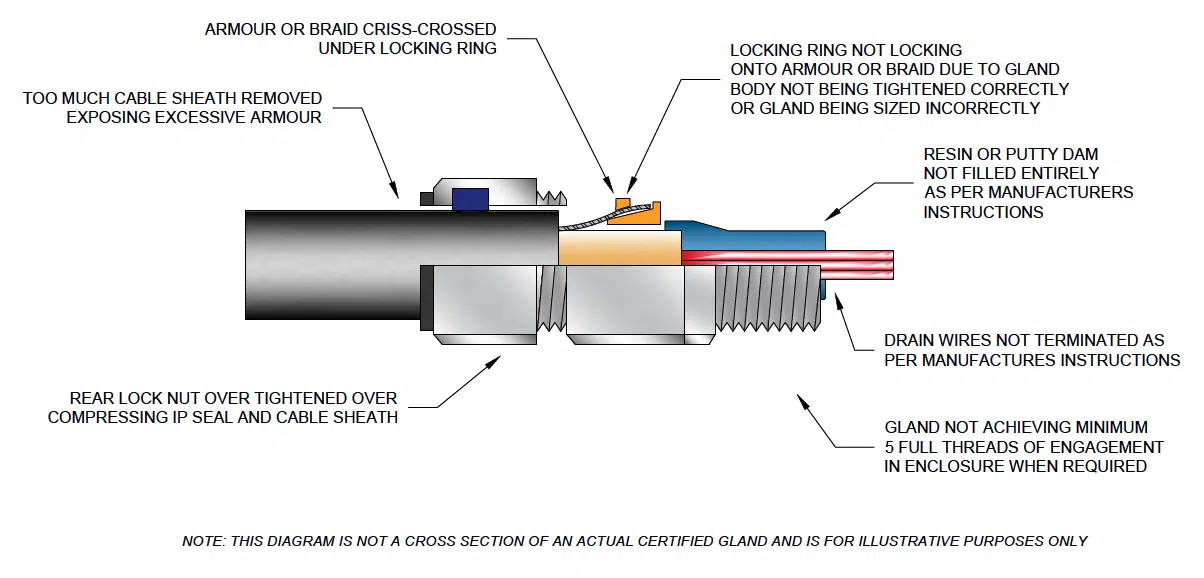Roar Solutions Fundamentals Explained
Roar Solutions Fundamentals Explained
Blog Article
Some Ideas on Roar Solutions You Should Know
Table of ContentsFacts About Roar Solutions UncoveredThe Definitive Guide for Roar SolutionsIndicators on Roar Solutions You Should Know
In order to secure installations from a potential surge an approach of analysing and classifying a possibly harmful location is required. The objective of this is to guarantee the correct selection and installment of devices to inevitably avoid an explosion and to ensure safety and security of life.
(https://www.figma.com/design/4A7baTVvle9Yit65rIBitI/Untitled?node-id=0-1&t=PKjLsk7ODuPV6hjT-1)
No equipment needs to be installed where the surface temperature of the devices is more than the ignition temperature level of the given risk. Below are some typical dirt hazardous and their minimum ignition temperature. Coal Dust 380C 225C Polythene 420C (melts) Methyl Cellulose 420C 320C Starch 460C 435C Flour 490C 340C Sugar 490C 460C Grain Dirt 510C 300C Phenolic Material 530C > 450C Aluminium 590C > 450C PVC 700C > 450C Soot 810C 570C The possibility of the danger existing in a focus high enough to trigger an ignition will certainly differ from place to location.
In order to identify this threat an installation is split right into areas of danger relying on the quantity of time the harmful exists. These locations are described as Zones. For gases and vapours and dirts and fibers there are three zones. Area 0 Area 20 An unsafe ambience is very most likely to be present and may exist for long durations of time (> 1000 hours each year) or perhaps continuously Area 1 Zone 21 A dangerous ambience is feasible however unlikely to be present for extended periods of time (> 10 450 C [842 F] A classification of T6 implies the minimal ignition temperature is > 85 C [185 F] Dangerous area electrical equipment perhaps designed for use in greater ambient temperatures. This would certainly indicated on the ranking plate e.g. EExe II C T3 Ta + 60C( This indicates at 60C ambient T3 will certainly not be gone beyond) T1 T1, T2, T3, T4, T5, T6 T2 T2, T3, T4, T5, T6 T3 T3, T4, T5, T6 T4 T4, T5, T6 T5 T5, T6 T6 T6 A T Class score of T1 means the maximum surface area temperature level created by the instrument at 40 C is 450 C. Thinking the linked T Class and Temperature level ranking for the equipment are appropriate for the location, you can constantly make use of a tool with an extra rigorous Division score than needed for the location. There isn't a clear solution to this inquiry unfortunately. It really does rely on the type of equipment and what repair services need to be executed. Devices with specific examination treatments that can not be carried out in the field in order to achieve/maintain third celebration rating. Must return to the factory if it is before the equipment's solution. Area Repair Service By Authorised Personnel: Difficult testing may not be called for nevertheless certain procedures might need to be followed in order for the devices to maintain its 3rd party ranking. Authorised personnel should be used to perform the work properly Repair work must be a like for like substitute. New component need to be considered as a straight substitute needing no unique screening of the devices after the repair is full. Each piece of tools with a harmful score need to be assessed separately. These are detailed at a high level below, yet for more comprehensive details, please refer straight to the standards.
Top Guidelines Of Roar Solutions
The equipment register is a detailed database of tools documents that includes a minimum collection of areas to determine each thing's place, technical parameters, Ex lover category, age, and environmental data. The ratio of Comprehensive to Shut inspections will certainly be identified by the Equipment Threat, which is evaluated based on ignition risk (the possibility of a resource of ignition versus the chance of a combustible ambience )and the hazardous area classification
( Zone 0Area 1, or 2). Applying a robust Risk-Based Assessment( RBI )approach is essential for guaranteeing compliance and safety in taking care of Electrical Tools in Hazardous Areas( EEHA).
Indicators on Roar Solutions You Need To Know

In terms of explosive danger, an unsafe location is an environment in which an eruptive environment is existing (or might be expected to be existing) in quantities that need unique precautions for the building and construction, installation and usage of equipment. high voltage courses. In this article we discover the challenges faced in the work environment, the risk control measures, and the needed competencies to function safely
It issues of modern life that we manufacture, keep or take care of a variety of gases or liquids that are considered flammable, and a variety of dirts that are regarded combustible. These materials can, in particular problems, dig this form eruptive environments and these can have significant and heartbreaking effects. Many of us recognize with the fire triangular remove any type of one of the three aspects and the fire can not take place, yet what does this mean in the context of dangerous locations? When breaking this down into its simplest terms it is essentially: a mix of a specific quantity of release or leak of a specific substance or material, blending with ambient oxygen, and the existence of a source of ignition.
In a lot of circumstances, we can do little regarding the degrees of oxygen airborne, yet we can have substantial influence on sources of ignition, for instance electrical equipment. Dangerous areas are recorded on the dangerous area category drawing and are recognized on-site by the triangular "EX" indicator. Right here, amongst various other vital info, zones are split right into three types depending on the hazard, the likelihood and period that an eruptive atmosphere will exist; Zone 0 or 20 is considered one of the most unsafe and Zone 2 or 22 is deemed the least.
Report this page